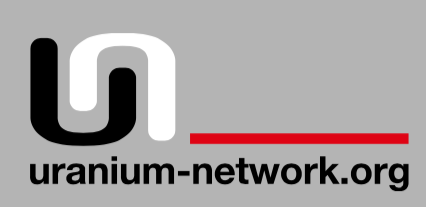On September 22-23, uranium-network.org attended the international conference “Uranium Mining and Hydrogeology” at the renowned mining university Bergakademie Freiberg.
We had an information booth up and running to demonstrate our concerns for global uranium mining and exploitation. We also listened to some interesting presentations during the conference.
An introductory presentation by Mr. Mischo on the “Uranium Boom in Namibia” showed that due to the current low price of uranium (approx. US $ 30 / pound of U3O8), most of the new uranium projects in Namibia are NOT going ahead: AREVA’s Trekkopje mine has been put on care and maintainance for an undefined period, and another project, Valencia, cannot find investors. Thus, only the existing mines (Rössing, and Langer Heinrich, started up some years ago) continue their work, and the Husab project mine is going ahead.
Doesn’t sound like much of a boom, does it? In addition, the Namibian Government has put a moratorium on giving new mining licenses, and has conducted a “Strategic Environmental Impact Assessment” (SEA) on uranium mining (2010).
Whereas many presentations focused on technical issues of uranium mining, the information booth of uranium-network.org put an emphasis on the environmental, health and social impacts of uranium mining and the experiences in other countries, African as well as others, and was well visited by all kinds of interested people during the conference.
We were impressed with Mrs. Mariette Liefferink of FSE, who gave a presentation on the situation in South Africa. The country has to deal with numerous issues that can be directly attributed to uranium mining. Among their number are dozens of unreclaimed mines, some 200 unrehablitated tailings dams, acid mine drainage wich is polluting the rivers and creeks, informal settlements right on the radioactive tailings, sinkholes from former mines and so forth. Find more facts in the full presentation.
